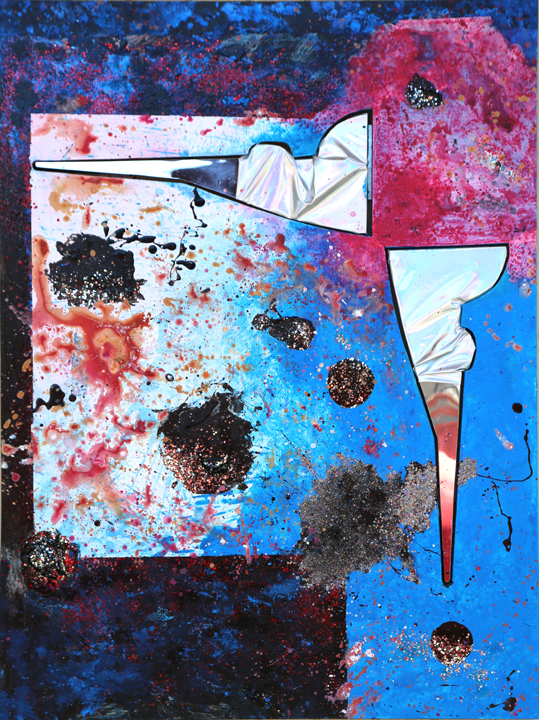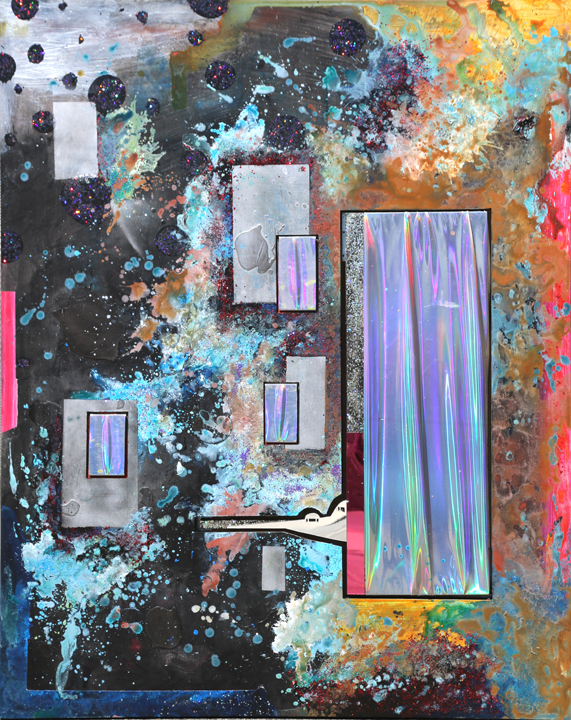Los Angeles artist Kaloust Guedel‘s innovative approach ultimately paid off. After exhausting his artistic curiosity with plastic-structured sculptural forms, he was searching for a more striking juxtaposition of elements. Guedel has always understood that experimentation is key to pushing boundaries and challenging established norms. When he placed one of his works into a painting by carving its shape out of it, and inserting it into the cavity that corresponded with the shape of the object, the result was stunning. An ancient technique known as inlay was discovered by chance. Regardless of how innovative a work of art may be, it always finds its basis in traditions, cultures, and history.

The Chinese invented the technique in 400 BC to decorate objects. In the later stages, inlays were adopted by craftsmen in Europe. Perhaps the most famous example of furniture inlay is that of Andre-Charles Boulle (1642 – 1732), known as Boulle Work which evolved in part from inlay produced in Italy during the late 15th century. Inlay covers a range of techniques in the decorative arts for inserting pieces of contrasting, often colored materials into depressions in the base object. It was used in sculpture, such as a Pre-Dynastic Egyptian bone figure with eyes inlaid in lapis lazuli. Inlaid eyes are found in sculpture from many periods, but never before in painting.

When asked about his work, Guedel says, “To me, art is a way of communicating, when you say something about something, or you say something about nothing. Either way, it’s all about saying something new, fresh,and even specific. I don’t start with a predetermined imagery in mind when starting the work, and there is always the concept…” he says. “What interests me is the relationship of the elements that I find captivating for my curiosity at the moment of creation, considering in the next moment the interest may shift entirely somewhere else.”

If I can invent a new way of shifting those elements in a way that communicates to my sense of harmony,or find a way of consistent stimulation, and to be able to make the relationship of elements a content of the work comes with the reward of understanding of my relationship with the primary essence of the subject,”he says. Guedel asserted that “art is not what is seen, but that which lies beyond …”.

As the artist explains, the new art work is an investigation of immersion. It represents the first survey of immersion in contemporary painting, a departure from his earlier work known as Excessivism. A movement that Kaloust Guedel introduced to the Los Angeles art scene with an exhibition titled Excessivist Initiative.

The review was written by art critic and curator Shana Nys Dambrot, titled “Excessivism: Irony, Imbalance and a New Rococo” and was published in the Huffington Post.
Media Contact
Company Name: Zdom
Contact Person: John Holder
Email: Send Email
Phone: 8186323099
Address:416 Cameron Pl. C
City: Glendale
State: CA 91207
Country: United States
Website: Zdom.com



